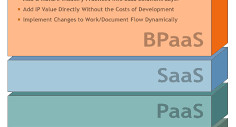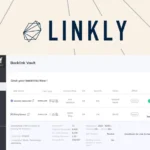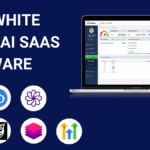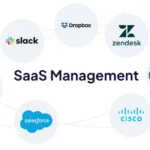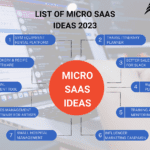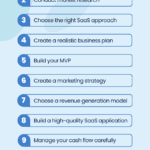BPaaS (Business Process as a Service) offers business process outsourcing via the cloud, while SaaS (Software as a Service) provides software applications over the internet. BPaaS integrates cloud-based business process services with SaaS, PaaS, and IaaS.
It focuses on automating business operations, enhancing efficiency, and reducing costs. BPaaS is ideal for organizations seeking to streamline processes without investing heavily in infrastructure. SaaS, on the other hand, delivers software applications via the cloud, eliminating the need for local installation.
It ensures easy access, scalability, and maintenance. SaaS suits businesses looking for flexible, on-demand software solutions. Both models leverage cloud technology but serve different purposes: BPaaS for business processes and SaaS for software applications. Understanding their distinctions helps businesses make informed decisions.
Introduction To Bpaas And Saas
Cloud services have changed the way businesses work. They offer flexible and scalable solutions. Many companies now use cloud services daily. Two popular types are BPaas and SaaS.
BPaas stands for Business Process as a Service. It helps automate business processes. SaaS stands for Software as a Service. It offers software access over the internet.
Both BPaas and SaaS have unique benefits. BPaas can improve efficiency. SaaS can reduce costs. Businesses can choose based on their needs. Both options make work easier and faster.
Defining Bpaas
BPaas stands for Business Process as a Service. It is a type of cloud service. BPaas combines business process outsourcing with cloud computing. Companies use BPaas to outsource their business processes. This helps them save time and money. BPaas offers scalability and flexibility. Companies can adjust their services based on needs. BPaas integrates with other cloud services easily. This makes operations more efficient.
BPaas is highly automated. It uses software to perform tasks. BPaas is cost-effective. Companies only pay for what they use. BPaas provides real-time data. It helps in making quick decisions. BPaas is customizable. Companies can tailor services to their needs. BPaas is secure. Data is protected in the cloud.
Businesses use BPaas in customer service. It helps manage customer queries. BPaas is used in human resources. It automates hiring and payroll. BPaas is common in finance. It manages accounts and transactions. Companies use BPaas in supply chain management. It tracks shipments and inventory. BPaas helps in marketing. It automates email campaigns.
Defining Saas
SaaS stands for Software as a Service. It provides software over the internet. Users do not need to install software. They access it through a web browser. This makes it very convenient. SaaS is also cost-effective. Businesses do not have to worry about maintaining servers. Software updates happen automatically. This saves time and effort.
SaaS has several key features. It is subscription-based. Users pay a monthly or yearly fee. The software is scalable. It can grow with your business. SaaS is also accessible from anywhere. You only need an internet connection. The software is maintained by the provider. This ensures it is always up-to-date and secure.
SaaS is used in many areas. Email services like Gmail are SaaS. Customer relationship management tools like Salesforce use SaaS. Online storage services like Dropbox are also SaaS. Businesses use SaaS for project management with tools like Asana. Even video conferencing tools like Zoom are SaaS. SaaS makes many tasks easier and faster.
Comparing Service Models
BPaaS focuses on automating business processes. Examples include payroll, human resources, and finance. It provides end-to-end solutions. Users get tailored services for specific needs. Companies can streamline operations with BPaaS. This model helps in reducing manual tasks. It also enhances productivity significantly.
SaaS, on the other hand, offers software applications over the internet. These applications are ready to use. Users only need a web browser to access them. SaaS covers a wide range of services, from email to customer management. It simplifies software deployment and maintenance. Updates happen automatically without user intervention.
BPaaS mainly targets large enterprises. These companies have complex business processes. They need custom solutions to manage operations. BPaaS offers scalability and flexibility. Smaller businesses might also use BPaaS, but less frequently.
SaaS is ideal for small to medium-sized businesses. Even individual users benefit from SaaS. It provides cost-effective solutions for various needs. SaaS applications are easy to adopt. They do not require extensive IT resources.
Customization And Flexibility
BPaas allows for high levels of customization. Businesses can tailor processes to their needs. This flexibility supports unique workflows. Customizations can be made quickly. Adjustments help companies adapt to market changes. BPaas offers scalable solutions. Growth is supported without significant changes. This is ideal for growing businesses. Customization extends to integrations. Systems can connect easily with existing tools.
SaaS provides predefined features and functions. Users work within the given framework. Customization options are limited. This makes deployment faster. SaaS solutions are easy to use. Most features are ready out-of-the-box. Updates are automatic and regular. Users always have the latest features. This is good for standard business needs. SaaS works best for common tasks. It fits well in many industries.

Credit: cloudhcm.wordpress.com
Integration With Business Processes
BPaas offers seamless integration with existing business processes. It adapts to your unique business needs. Custom workflows become easy to manage. Automation is a key feature. Efficiency improves significantly. Businesses save time and resources. BPaas scales with your company growth. It provides real-time analytics. Decision-making becomes faster and more accurate.
SaaS solutions are easy to deploy. They follow a plug-and-play approach. No complex setup is needed. Users can access them from anywhere. This makes them very convenient. SaaS products are often user-friendly. They require minimal training. Updates are handled by the provider. This ensures the software is always up-to-date. Scalability is another advantage. Businesses can add or remove users easily.
Cost Implications
BPaas stands for Business Process as a Service. It offers flexible pricing options. Costs are based on the specific services used. This helps companies manage their budgets better. BPaas can be more cost-effective for large businesses. Small businesses might find it costly due to the scale required.
SaaS stands for Software as a Service. Pricing is usually subscription-based. Customers pay a monthly or annual fee. This fee covers software usage and support. Some SaaS providers offer tiered pricing. Basic plans are cheaper but offer fewer features. Premium plans cost more but include advanced features.

Credit: medium.com
Security And Compliance
BPaas uses strong encryption to protect data. Regular audits ensure compliance with regulations. There are firewalls to block unauthorized access. Multi-factor authentication adds another layer of security. Data is stored in secure servers.
SaaS providers use SSL for secure connections. Encryption keeps data safe during transfer. Backups are done frequently to prevent data loss. Providers follow strict compliance standards. User permissions control access to sensitive data.
Scalability And Growth
BPaas stands for Business Process as a Service. It helps businesses scale operations smoothly. Companies can easily add or remove services. This flexibility saves both time and money. BPaas offers a pay-as-you-go model. This means you only pay for what you use. It’s perfect for growing businesses. You don’t need big upfront investments. BPaas integrates well with existing systems. This ensures no disruption in your work. BPaas also offers customizable solutions. This means it can fit your unique business needs.
SaaS stands for Software as a Service. It provides software over the internet. No need for local installations. SaaS offers automatic updates. This ensures you always use the latest features. SaaS is scalable. You can easily add more users. This is great for growing companies. SaaS often includes customer support. This helps solve any issues quickly. SaaS allows easy access from anywhere. All you need is an internet connection. SaaS solutions are usually cost-effective. They reduce the need for expensive hardware.
Making The Right Choice For Your Business
Choosing between BPaaS and SaaS depends on your company's needs. BPaaS helps with business processes. SaaS helps with software applications. Small companies might prefer SaaS. It is simple and easy to use. Large companies might need BPaaS. It offers more customization and control.
| Feature | BPaaS | SaaS |
|---|---|---|
| Customization | High | Low |
| Cost | Variable | Fixed |
| Implementation Time | Long | Short |
| Scalability | High | Medium |
Future Trends In Bpaas And Saas
Artificial Intelligence and Machine Learning are changing the landscape. These technologies offer smarter automation. They help in making better decisions. Blockchain is another game-changer. It provides secure and transparent transactions. Internet of Things (IoT) connects more devices. This increases data collection and analysis. These technologies make BPaas and SaaS more powerful.
Cloud services will continue to evolve rapidly. More businesses will adopt these services. They offer flexibility and cost savings. Hybrid clouds will become more popular. They combine public and private clouds. This offers the best of both worlds. Edge computing will also rise. It brings data processing closer to the source. This reduces latency and improves performance.

Credit: anitalettink.com
Frequently Asked Questions
What Is An Example Of A Bpaas?
An example of BPaaS is ADP, which offers cloud-based payroll services. It streamlines payroll management for businesses.
What Is Saas And Bpaas?
SaaS stands for Software as a Service, delivering software over the internet. BPaaS, or Business Process as a Service, offers business process outsourcing through cloud services. Both enhance efficiency and reduce costs.
What Is The Bpaas Platform?
BPaaS (Business Process as a Service) is a cloud-based service that automates business processes. It integrates with other services to streamline workflows, enhancing efficiency and reducing costs. BPaaS platforms are scalable and customizable, suitable for various industries.
What Is The Difference Between Bpo And Bpaas?
BPO involves outsourcing business processes to third-party providers. BPaaS delivers these services through cloud-based platforms, offering greater flexibility and scalability.
Conclusion
Choosing between BPaaS and SaaS depends on your specific business needs. BPaaS is ideal for complex processes, while SaaS excels in software delivery. Evaluate your company's requirements carefully. Both options offer valuable solutions for improving efficiency and scalability. Make an informed decision to leverage the best technology for your business growth.
